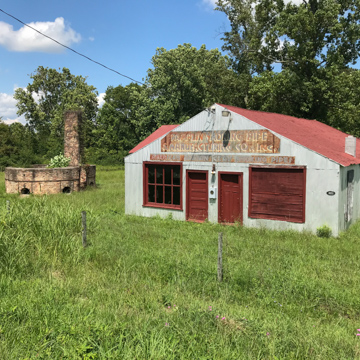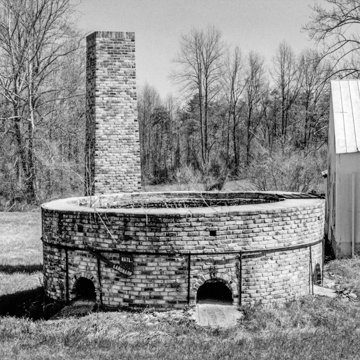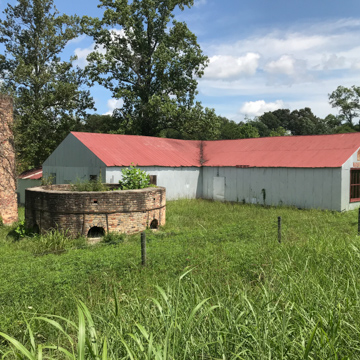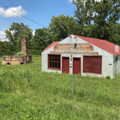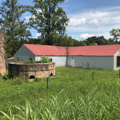Before it closed in 1952, this was the largest clay pipe factory in America, with production reaching one million pipes per month in the 1930s. Clay pipes like those produced here were used by Native Americans. Archaeologists have yet to determine how far back clay pipes were manufactured but local lore has it that they date from the contact period between settlers and Indians. Behind the frame factory building sheathed with corrugated sheet metal are the yellow brick ruins of a c. 1920 round kiln. This was covered by a low dome and vented by a short tunnel leading to its now-reconstructed squared smokestack. A full-size door allowed access to the interior of the round kiln where the unfired clay pipes were stacked in fireclay boxes. Fires, laid in hearths against the interior brick walls, were stoked from the exterior through arched portals with removable iron covers. Like many of America's small towns, Pamplin's small commercial district is largely unoccupied and stands as testimony to the nation's shift to large discount retailers and, here, the closing of its pipe factory.
You are here
Pamplin Pipe Factory
If SAH Archipedia has been useful to you, please consider supporting it.
SAH Archipedia tells the story of the United States through its buildings, landscapes, and cities. This freely available resource empowers the public with authoritative knowledge that deepens their understanding and appreciation of the built environment. But the Society of Architectural Historians, which created SAH Archipedia with University of Virginia Press, needs your support to maintain the high-caliber research, writing, photography, cartography, editing, design, and programming that make SAH Archipedia a trusted online resource available to all who value the history of place, heritage tourism, and learning.

